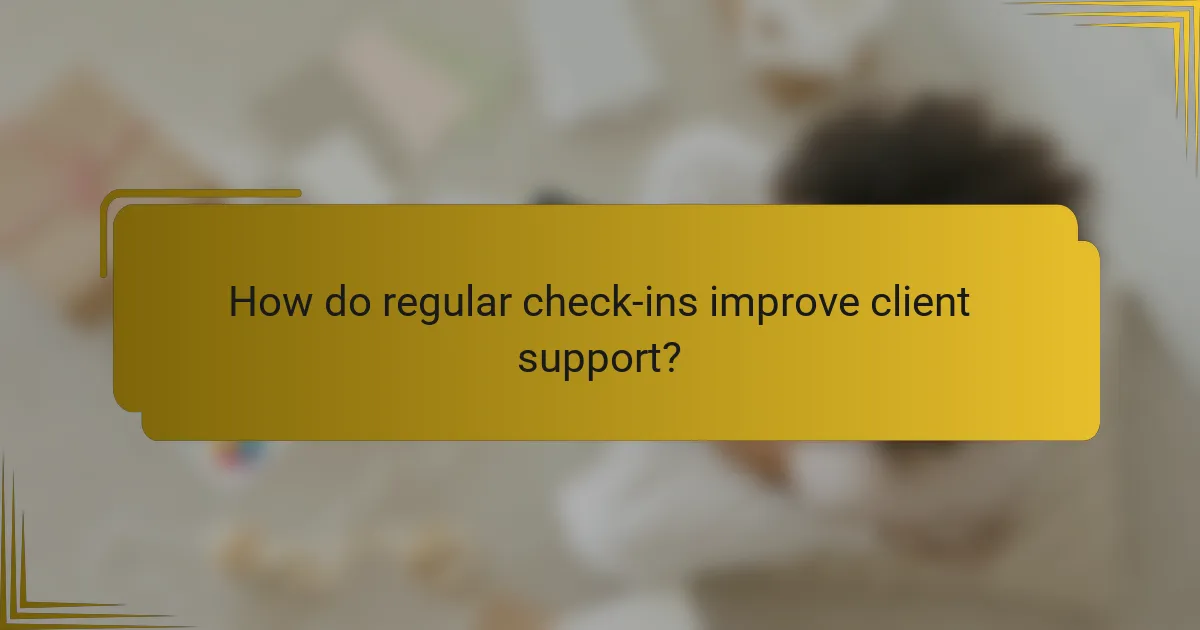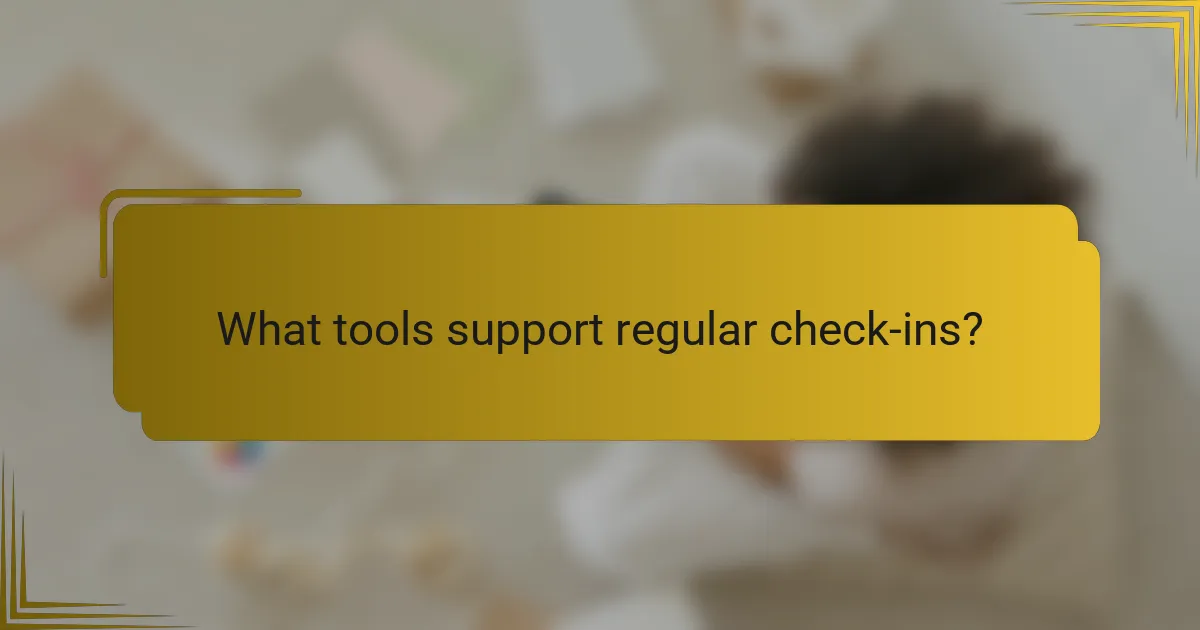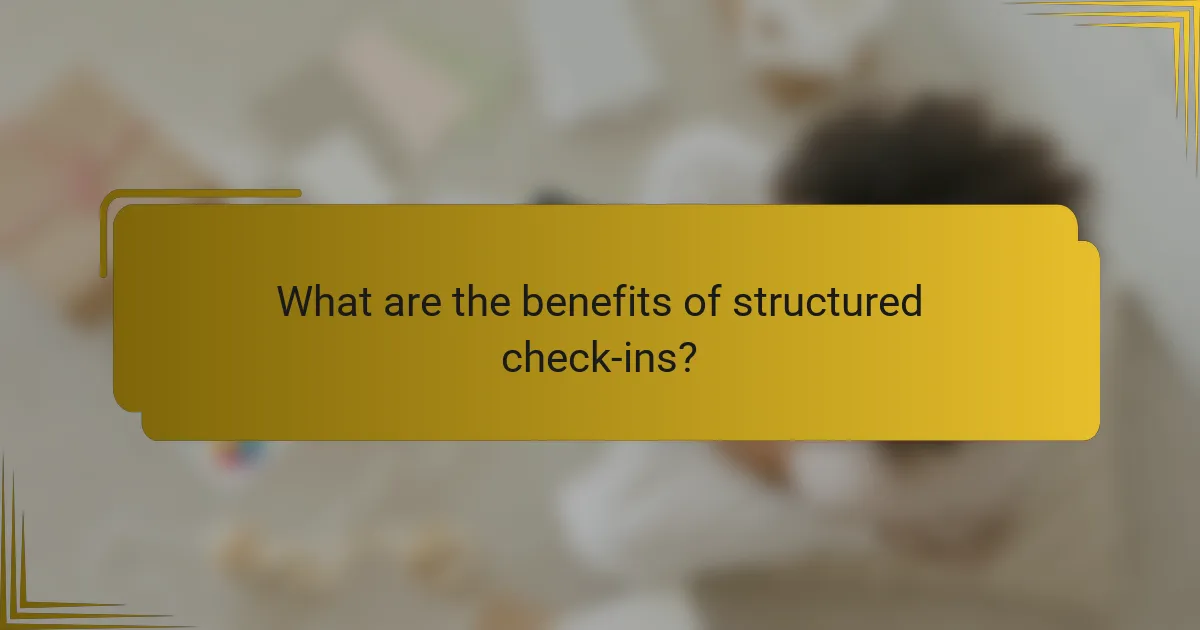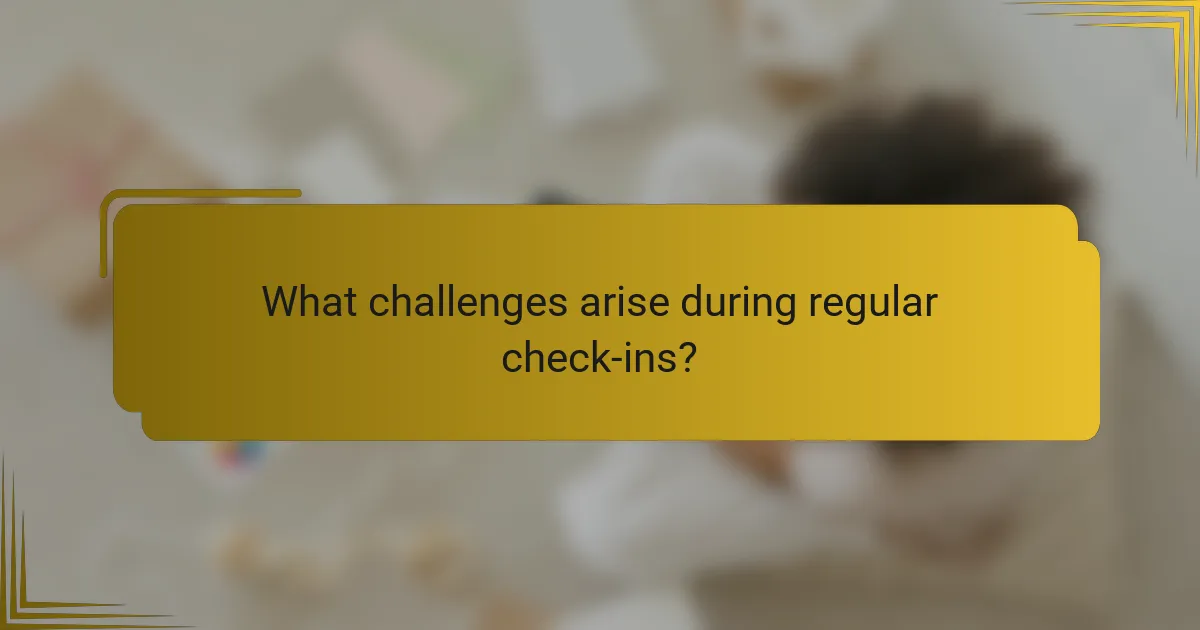Regular check-ins play a crucial role in enhancing client support by promoting open communication and ensuring accountability. These interactions not only help service providers assess client satisfaction but also facilitate timely assistance, ultimately leading to stronger relationships and improved outcomes. By implementing structured goal-setting and performance metrics, both clients and providers can effectively track progress and maintain mutual responsibility.

How do regular check-ins improve client support?
Regular check-ins significantly enhance client support by fostering open communication, ensuring accountability, and providing timely assistance. These interactions allow service providers to gauge client satisfaction and address concerns proactively, leading to stronger relationships and better outcomes.
Enhanced communication
Regular check-ins create a structured opportunity for clients and service providers to exchange information. This consistent dialogue helps clarify expectations, align goals, and share updates on progress. By establishing a routine, clients feel more comfortable voicing their concerns and feedback.
Utilizing various communication channels—such as video calls, emails, or messaging apps—can cater to different client preferences. This flexibility ensures that clients remain engaged and informed throughout the process.
Increased client satisfaction
Frequent check-ins contribute to higher client satisfaction by demonstrating commitment and attentiveness. Clients appreciate when their needs are prioritized, leading to a more positive overall experience. Regular feedback loops allow service providers to adjust their approach based on client input, further enhancing satisfaction.
Surveys or informal feedback during check-ins can help identify areas for improvement. Implementing changes based on this feedback can lead to a noticeable increase in client loyalty and retention.
Timely issue resolution
Regular check-ins facilitate prompt identification and resolution of issues that may arise during a project or service delivery. By addressing concerns early, service providers can prevent small problems from escalating into larger ones. This proactive approach saves time and resources for both parties.
Establishing a clear process for reporting and resolving issues during check-ins can streamline communication. For example, creating a checklist of common concerns can help guide discussions and ensure that nothing is overlooked.
![]()
What are effective methods for progress tracking?
Effective methods for progress tracking include structured goal-setting frameworks, clear performance metrics, and the use of project management tools. These approaches help ensure accountability and provide clients with the support they need to stay on track.
Goal-setting frameworks
Goal-setting frameworks, such as SMART (Specific, Measurable, Achievable, Relevant, Time-bound) criteria, help define clear objectives. By establishing specific goals, teams can focus their efforts and measure progress effectively.
Consider using OKRs (Objectives and Key Results) to align team goals with broader organizational objectives. This method encourages transparency and accountability, as everyone can see how their contributions impact overall success.
Performance metrics
Performance metrics are essential for quantifying progress and evaluating success. Common metrics include completion rates, time spent on tasks, and quality assessments, which can provide insights into areas needing improvement.
Establish benchmarks to compare current performance against historical data or industry standards. This helps identify trends and informs decision-making, allowing for timely adjustments to strategies.
Project management tools
Project management tools like Trello, Asana, or Microsoft Project facilitate progress tracking by providing visual representations of tasks and timelines. These platforms allow teams to assign responsibilities, set deadlines, and monitor progress in real-time.
Choose a tool that fits your team’s workflow and offers features such as reporting and analytics. Regularly update the tool to reflect current status and ensure all team members are aligned on project goals and timelines.

How can accountability be fostered in client relationships?
Accountability in client relationships can be fostered through consistent communication, clear expectations, and mutual responsibility. By establishing regular check-ins and transparent processes, both parties can track progress and address issues promptly.
Regular feedback sessions
Regular feedback sessions are crucial for maintaining accountability. These meetings should occur at set intervals, such as weekly or bi-weekly, to discuss progress, challenges, and next steps. This consistent dialogue helps ensure that both the client and service provider remain aligned on goals and expectations.
During these sessions, it’s beneficial to use structured formats, such as agendas or progress reports, to keep discussions focused. This approach allows for constructive criticism and recognition of achievements, reinforcing a culture of accountability.
Defined responsibilities
Clearly defined responsibilities are essential for fostering accountability. Each party should have a well-articulated understanding of their roles and tasks, which can be documented in a project charter or agreement. This clarity helps prevent misunderstandings and ensures that everyone knows what is expected of them.
Consider using a RACI matrix (Responsible, Accountable, Consulted, Informed) to outline responsibilities. This tool can help visualize who is responsible for each task and who needs to be kept in the loop, thereby enhancing accountability.
Transparent reporting
Transparent reporting enhances accountability by providing visibility into progress and performance metrics. Regularly sharing updates on key performance indicators (KPIs) or project milestones allows both parties to assess how well they are meeting their commitments.
Utilizing project management tools that offer dashboards or reports can facilitate this transparency. Ensure that reports are easy to understand and highlight both successes and areas needing improvement, fostering an environment where accountability is prioritized.

What tools support regular check-ins?
Several tools facilitate regular check-ins by enhancing task management, visual tracking, and communication. Utilizing these tools can improve accountability and support client relationships effectively.
Asana for task management
Asana is a robust task management tool that allows teams to create, assign, and track tasks in real time. It offers features like task dependencies, due dates, and project timelines, which help ensure that everyone stays on track with their responsibilities.
To maximize Asana’s effectiveness, set clear deadlines and regularly update task statuses. This practice not only keeps everyone informed but also fosters accountability among team members.
Trello for visual tracking
Trello utilizes a card-based system to visually organize tasks and projects, making it easy to see progress at a glance. Users can create boards for different projects and move cards through various stages, which enhances clarity on task completion.
For effective use of Trello, consider setting up columns that represent different phases of a project, such as “To Do,” “In Progress,” and “Done.” This visual approach can help teams quickly identify bottlenecks and prioritize tasks accordingly.
Slack for communication
Slack is a communication platform that streamlines conversations among team members, making it easier to discuss tasks and share updates. Channels can be created for specific projects or topics, allowing for focused discussions and quick feedback.
To leverage Slack effectively, establish guidelines for communication frequency and response times. This ensures that all team members are aligned and can address issues promptly, ultimately supporting regular check-ins and accountability.

What are the benefits of structured check-ins?
Structured check-ins provide clear benefits such as enhanced accountability, better progress tracking, and improved client support. These regular interactions help ensure that everyone is aligned on goals and expectations, leading to more effective project outcomes.
Improved goal alignment
Regular check-ins facilitate improved goal alignment by ensuring that all team members and clients are on the same page regarding project objectives. During these meetings, participants can discuss progress, clarify expectations, and make necessary adjustments to stay focused on shared goals.
To maximize goal alignment, consider setting specific, measurable objectives for each check-in. This approach helps in tracking progress and identifying any deviations from the original plan, allowing for timely course corrections.
Stronger client relationships
Structured check-ins contribute to stronger client relationships by fostering open communication and trust. Regular updates allow clients to voice their concerns and feedback, creating a collaborative atmosphere that enhances satisfaction and loyalty.
To build stronger relationships, ensure that check-ins are not just about reporting progress but also about actively listening to client needs. This two-way communication can lead to deeper insights and a more personalized service experience.
Increased project efficiency
Increased project efficiency is a key benefit of structured check-ins, as they help identify bottlenecks and streamline processes. By regularly reviewing progress and challenges, teams can quickly address issues that may hinder productivity.
To boost efficiency, establish a clear agenda for each check-in, focusing on critical tasks and deadlines. This practice keeps discussions on track and ensures that time is used effectively, ultimately leading to faster project completion.

What challenges arise during regular check-ins?
Regular check-ins can present several challenges, including time management, communication barriers, and varying levels of engagement. Addressing these issues is crucial for maintaining accountability and ensuring effective client support.
Time management issues
Time management is a common challenge during regular check-ins, as both clients and service providers may struggle to allocate sufficient time for meaningful discussions. Meetings can often run longer than planned, leading to scheduling conflicts and reduced productivity.
To mitigate time management issues, set clear agendas before each check-in. This helps keep discussions focused and ensures that all key topics are covered within the allotted time. Consider using tools like timers or reminders to help participants stay on track.
Additionally, scheduling check-ins at consistent intervals—such as weekly or bi-weekly—can help establish a routine, making it easier for everyone to prioritize these meetings. Aim for durations of 30 to 60 minutes, depending on the complexity of the topics to be discussed.